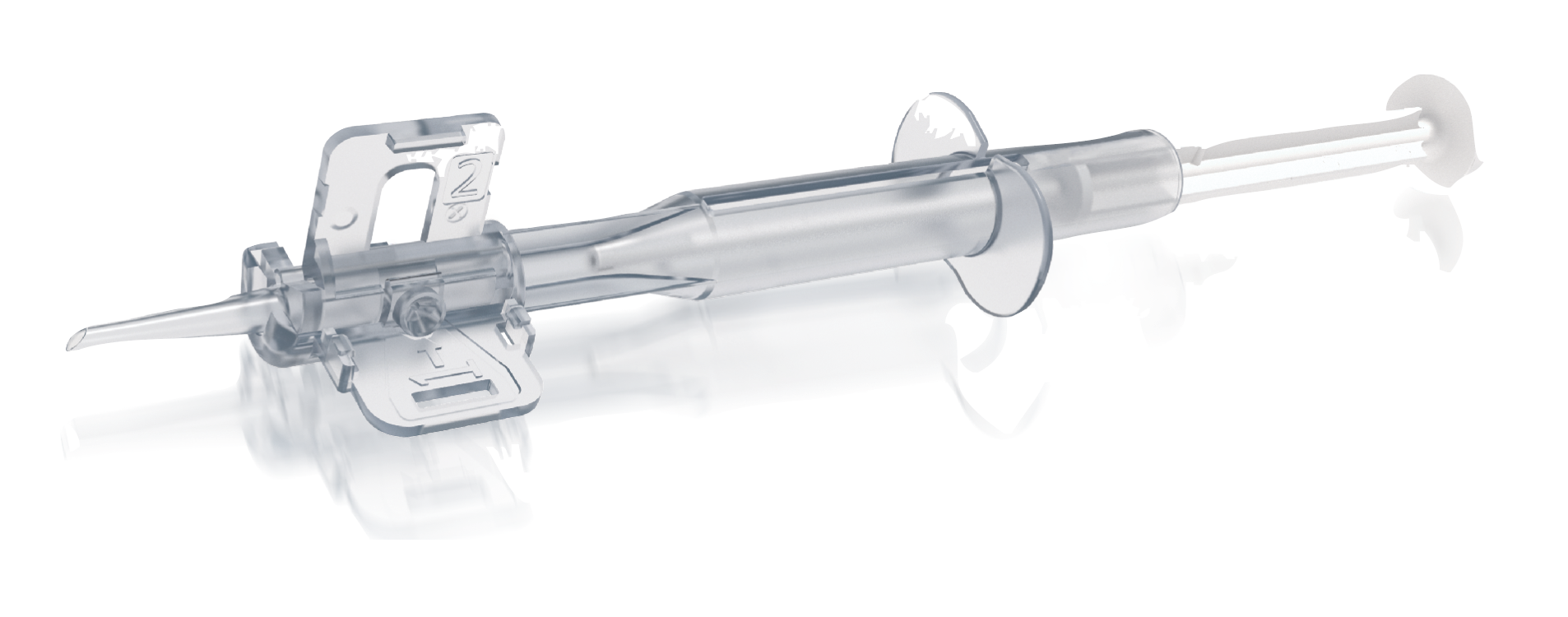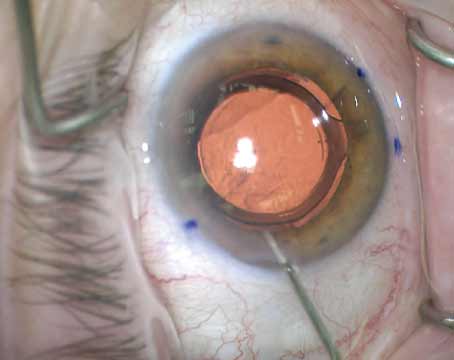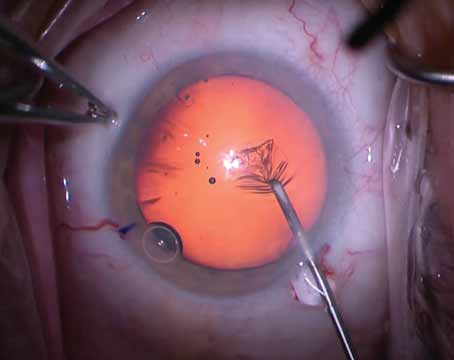Recent years have seen the addition of new preloaded intraocular lens injectors, offering ophthalmologists even more options when performing cataract procedures. These devices eliminate the need for surgeons and/or their staff to manually load an IOL into an inserter before inserting the lens into the capsular bag.
With ongoing advances and refinements, the potential benefits and impact of preloaded IOL injectors continues to grow. Here surgeons discuss the various injectors, their features, techniques for use and ways they can fit into your clinical practice.
Tecnis Simplicity (Johnson & Johnson Vision)
This preloaded, fully disposable IOL delivery system is currently available with the following lenses: Tecnis Eyhance; Tecnis Eyhance toric; Tecnis Synergy; Tecnis Synergy Toric; Tecnis Symfony Optiblue with InteliLight; and Tecnis Symfony Optiblue with InteliLight toric.
It uses a three-step process: hydrate; advance; deliver, according to Vance Thompson, MD, who notes that the familiar screw style inserter is smooth and reliable. When discussing his experience with Tecnis Simplicity, he says that it’s a “simple, easy-to-use delivery system that feels and acts just like a reusable insertion system but with less risk of infection associated with contamination and a smooth, controlled delivery.”
The Tecnis Simplicity delivery system requires a two-handed approach and can be used with either BSS or OVD. “It’s great to be able to use either BSS or OVD to hydrate the cartridge,” he explains. “You flush the cartridge with BSS (or fill with OVD) by pointing the tip down, and simply advance the rod and twist. It’s time-efficient and fully disposable.
“Using BSS is great as it can save money and sometimes prevent opening additional OVD for the case,” Dr. Thompson adds, while noting that this delivery system “prevents manual loading errors and IOL touches and provides a smooth and consistent delivery that’s controlled.”
IPure (BVI)
This is currently the only fully pre-loaded aspheric monofocal IOL system available in both a one-piece (1P) and three-piece (3P) design in the United States. The following IOLs are available pre-loaded in the IPure system: IPure 1P (Clear); IPure 1P (Yellow-tinted); and IPure 3P (Clear).
Having the option of a one- or three-piece preloaded system is very valuable, notes William Wiley, MD. “Most surgeons today typically use a one-piece, but sometimes if something isn’t quite right, maybe the anatomy of the eye is different or something changes during the surgery, we have to place a three-piece style lens. And so, the IPure system allows us to have a three-piece option on the shelf that’s preloaded.”
The IPure 1P and 3P delivery systems go through 2.4-mm and 2.6-mm incisions, respectively, and follow the same preparation steps, according to Dr. Thompson. These steps include:
• inject cohesive OVD through the injector port;
• press and release tabs to remove the cover;
• fixate the injector body with one hand and slowly advance the slider forward with the other hand until it stops; then
• remove from case and push the knob forward and twist.
“With any injector system, you must handle with care and pay attention to each step,” notes Dr. Thompson. “For the IPure injector system, its important in Step 3 to advance the lens slowly—“slow” means taking three seconds to slowly advance the slider forward while keeping the body of the injector stable and fixated.
“As you advance the slider forward, there’s a built-in tucking pin mechanism within the injector system that comes into contact with the leading haptic,” he continues. “The leading haptic engages with the tucking pin and is then slowly folded over the optic.”
SimplifEYE IOL Delivery System (Bausch + Lomb)
Indicated for use with the enVista (MX60PL) and enVista Toric (MX60PT) aberration-free lenses, the SimplifEYE IOL delivery system has a shuttle and body design. The IOL is packaged in a shuttle that’s stored in BSS, explains Dr. Thompson.
“To assemble the device, you snap the shuttle into the inserter body and then prep for lens delivery by pressing down on the lens tab while applying an OVD such as AmVisc or AmVisc Plus,” he says. “The mechanism of action is a screw-type plunger, making this a two-handed device when implanting the lens.”
This system reduces manual handling and lens loading, and also offers the ability to implant a lens with a 2.4-mm incision or less, according to Dr. Thompson.
Eric Donnenfeld, MD, considers the SimplifEYE inserter one of the best on the market. “What I like about it is that it’s inserted through a very small incision and it’s a screw inserter so there’s a lot more control.”
The device, he explains, inserts very slowly as you screw it into place and doesn’t require a second instrument to implant the lens. “Usually, when you implant a lens, the trailing haptic has to be inserted with a second instrument. With this technology, the pusher device can actually nudge the lens into place by just inserting and then actually pressing down on the lens as it inserts into the capsular bag.”
Overall, the device is easy to use and has a minimal learning curve, according to Dr. Donnenfeld, who notes that his OR staff are also proponents of this particular IOL delivery system.
 |
| The RayOne Injector goes through 2.2 and 2.4-mm incisions. |
RayOne Injector (Rayner)
This pre-loaded IOL injector fits through standard 2.2-mm and 2.4-mm wounds, explains Aaron R. Noll, MD. “Rather than the traditional threaded injector design that requires a two-handed IOL injection approach, this injector operates with a plunger system,” he notes. “This system allows for a single-handed IOL insertion, which frees up the second hand for situations where a second instrument is needed to stabilize the eye.”
The injector is made of the same material as the tray that it comes in and the entire system is stored within a sealed tray containing BSS. Three FDA-approved IOLs are currently available with the RayOne injector. This includes the RayOne Spheric, Aspheric and, most recently, RayOne EMV which is an enhanced monofocal designed to extend depth of focus without compromising acuity or increase dysphotopsias, according to Dr. Thompson.
Dr. Noll, who has been using the RayOne injector for about six months, has found the system to be “very smooth and allows for an effortless injection of the IOL into the capsular bag.” Dr. Thompson is impressed by not only the RayOne injector, but also the preloaded lenses.
Ophthalmologists should be aware that this delivery system requires viscoelastic to be injected into the cartridge rather than BSS. “If you’ve used more viscoelastic than normal during the case, this could, on occasion, require you to open an additional vial in order to fill the capsular bag prior to insertion of the IOL,” advises Dr. Noll.
The system is ergonomically designed and preparation is a simple two-step process: load the OVD into the port (any OVD will do, but not BSS) and close the wings, explains Dr. Thompson. However, Drs. Thompson and Noll both note that there’s a learning curve with this tool.
“A tip that I’d provide when using the RayOne injector is to be aware of how quickly the IOL is exiting the device,” notes Dr. Noll. “While the system is easy to use, the IOL comes out more quickly than it does with other injector systems. Although this can help increase efficiency, I’d recommend a heightened awareness during your first few cases until you become comfortable with this increased speed.”
 |
| The Alcon AutonoMe injector uses a CO2-powered injecting mechanism. |
AutonoMe (Alcon)
This IOL delivery system allows for single-handed control via a CO2-powered mechanism. It’s designed to go through incisions as small as 2.2 mm and provides full IOL visibility during delivery with a 3 mm nozzle tip. The AutonoMe system is currently available with Clareon monofocal IOLs.
When using the device, surgeons should take the following steps: fill with an Alcon-qualified viscoelastic; remove the lock-out assembly; and advance the plunger to fold the IOL up to the pause location. Once this third step is complete, the lens should be implanted within a minute, the company says.
Richard Davidson, MD, considers this one of the best pre-loaded systems he has used to date. When asked what makes AutonoMe stand out, he highlighted its ease of use and precision, as well as the ability to operate the device with one hand.
“Another benefit is the precision with which you can advance the lens,” he says. “You have total control over lens insertion, so if you want to advance the lens, stop, restart and stop again, you have that option, as needed. You’re not committed to automatically just pushing and having the whole lens inserted immediately.”
Dr. Davidson also enjoys the reliability of the AutonoMe system. “It is very consistent in how well it folds and delivers the lens,” he notes. “As such, there are very few lenses that don’t fold perfectly.”
While discussing techniques for using preloaded injectors, Dr. Davidson says there’s an adjustment period. “It’ll take time to get used to how the tip of the pre-loaded injector fits into your wound. You may have to adjust your angle of insertion slightly,” he recommends. “Give it a few cases to get used to the device because every injector is different; however, like anything else, it becomes second nature. This is true of not just AutonoMe, but any preloaded injector.”
Benefits & Considerations
Preloaded IOL injectors can help streamline surgical workflows while lowering the risk of contamination and other potential complications associated with manual loading. Additionally, given staffing shortages and high turnover rates, pre-loaded devices can better support both surgeons and their staff.
“The continuing advances in preloaded IOL injectors allow for greater uniformity in the way in which the IOLs are loaded, which can decrease the risk of damage to the IOLs from manual loading techniques,” suggests Dr. Noll.
“I’m a big supporter of preloaded delivery systems, especially now, post-COVID, when it can be very difficult to get clinical staff in the OR,” adds Dr. Davidson. “It requires a certain amount of skill to properly fold a lens and put it into the cartridge. If we can reduce some of the skill requirements it opens the jobs for more people.
“While staff members can learn this skill, it takes time and practice, and for some it can be challenging and stressful,” he continues. “By taking out that piece of the equation we can ease the burden while also having the comfort of knowing you’re going to get a perfect, or a near perfect, fold every time with a lens that hasn’t been touched by human hands.”
While there are a host of benefits to preloaded injectors, there are also other considerations to keep in mind, including the environmental impact of this approach. With a growing emphasis on sustainability, the entire medical community is becoming more aware of the issue of medical waste and how it can be addressed, acknowledges Dr. Davidson.
“Medical waste is a significant issue and that includes ophthalmology and disposable preloaded IOL injectors,” he says. “Manufacturers and the medical community at large are looking for ways to reduce waste and mitigate environmental concerns without compromising patient safety.”
Ongoing Development
For Daniel Chang, MD, preloaded injectors are a valuable tool, but the IOL itself remains the most important component. “The ideal situation would be a preloaded cartridge that we could put onto a reusable or disposable injector,” he says. “This would give us the flexibility to separate the two. It would be the best of both worlds with a number of potential benefits.”
Looking to the future, Dr. Davidson believes the preloaded IOL injector market will only continue to grow with companies expanding the number and variety of IOLs offered via a preloaded delivery system.
“Preloaded IOL injectors offer consistency and are a beneficial addition to ophthalmic practice,” he notes, while urging surgeons who haven’t used a preloaded system recently to give it another try. “These devices have improved significantly since they were first introduced and my advice is to give them a second chance. Preloaded IOL systems are here to stay and I believe we’ll continue to see them further integrated into practice.”
Dr. Wiley consults for BVI, Rayner, J&J and Alcon. Dr. Thompson consults and does research for Alcon, B&L, BVI, J&J and Rayner. Dr. Donnenfeld is a consultant for B&L, J&J, Rayner and Alcon. Dr. Chang consults for J&J. Dr. Davidson consults for Zeiss, Alcon, and J&J. Dr. Noll has no financial disclosures.






